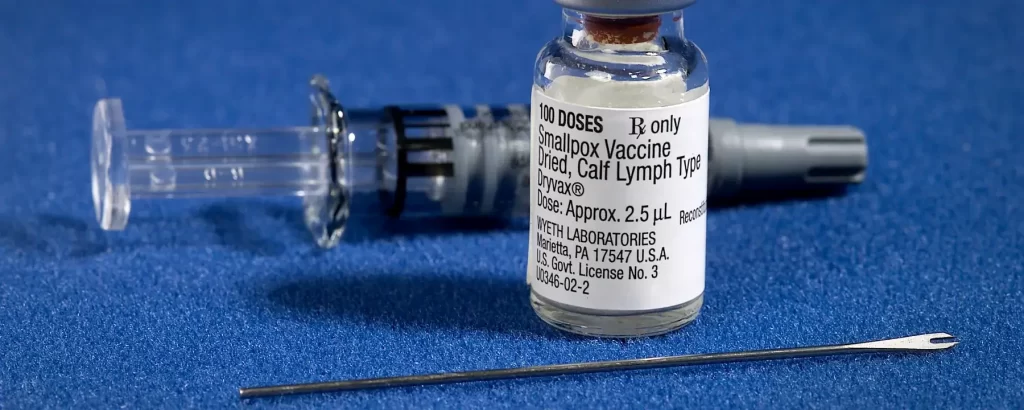A mouse study points to a possible mechanism by which the smallpox vaccine helped eradicate the disease in the 1980s.
Decades after an effective vaccine helped wipe smallpox off the face of the earth, researchers claim they finally understand how that injection induces immunity: by recruiting bacteria found on the skin.
Smallpox vaccination involved pricking the skin with a needle to introduce live vaccinia virus. The vaccine, which is no longer in use, was crucial in the global eradication of the disease in 1980 but, until now, scientists didn’t know how it worked. In a new study published in PLOS Pathogens on April 21, researchers from the University of Cambridge in the UK and the University of Bern in Switzerland found in mice that local skin bacteria introduced into the vaccination site may play a role in bolstering the host’s immune response.
In the study, the researchers vaccinated three groups of mice with the vaccinia virus and compared their immune responses. The first group included seven-week-old specific-pathogen-free (SPF) mice (laboratory mice bred to lack specific microbes) treated with antibiotics, the second was SPF mice without antibiotic treatment, and the last group consisted of seven-to-nine-week-old old germ-free mice, which don’t contain any microbes. After six days, the researchers observed a lesion on the vaccination site in all groups, but of varying sizes. Untreated SPF mice had larger lesions than the other groups. Historically, observing the formation of this lesion indicated to clinicians that the vaccine worked—even though they didn’t understand the underlying mechanism. In the new study, the researchers found that the lesion is a consequence of the proliferation of several skin bacteria that infect the vaccination site.
“We found out that after vaccinia vaccination, there was a huge increase in bacteria at the site of vaccination, which was not known,” lead study author and Cambridge researcher Geoffrey Smith tells The Scientist. “The presence of those bacteria correlated with the recruitment of neutrophils to the site of infection, and it was these and other cells that were promoting the development of the lesion. It’s not being caused by the virus, it’s being caused by the bacteria,” he says.

A small, pink, circular lesion on a person’s arm. A metric ruler is taped to the person’s skin nearby.
The researchers measured the rodents’ local immune response to the vaccine, reporting that it was weaker in the antibiotic-treated SPF group and the germ-free mice. Following vaccination, their analysis showed that immune cells in the antibiotic-treated mice and the germ-free mice declined significantly. However, neutrophils persisted and even increased in number in the group without antibiotic treatment. “That was the really interesting thing,” says Smith. “That suggested that the bacteria, when they were present, were contributing to the immune response that we got from vaccination.”
Also, the researchers observed that even though the smallpox vaccination offered protection against the disease in all groups, SPF mice had three times more neutralizing antibodies than their germ-free counterparts. The study is “kind of interesting and super novel,” says Dawn Bowdish, an immunologist from the University of McMaster in Canada who wasn’t involved in the study. However, she questioned whether the mouse model accurately measured the role of the microbes. “Because [the germ-free mice] have never been exposed to any microbes, [they] can have very immature immune systems,” she adds. “So sometimes, the results you get from using germ-free mice might not be due to the absence of microbes, but rather due to the immature immune system they have.”
Smith says he believes that strengthening the immune response with local bacteria might be a way to make intradermal vaccines more potent.
However, Bowdish says intradermal vaccines do not have much relevance today due to limited use. “We don’t use a lot of intradermal vaccines in many parts of the world,” she says. “It’s very effective in inducing [a] vaccine response, but they are very painful so people tend to prefer intramuscular vaccines.”
Related article:
Man drinks a dysentery smoothie to help develop a vaccine, has a really bad time
Revealing The Sex Of A Baby Before Birth Can Benefit Health, Mouse Studies Suggest


